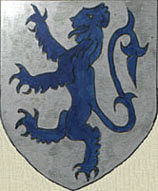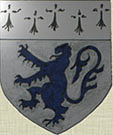THE WELL IN FRONT OF
THE WHIPPING POST.
|
 Skelton War Memorial with Whipping Post and
cistern behind.
Skelton War Memorial with Whipping Post and
cistern behind.
|
In the background to this picture, the old
Whipping Post can be just seen to the right.
Tom Curnow in his book "Skelton and its History" says that
there is "an old well... with railings.. in front of the Whipping
Post..and this is now filled in".
This can be clearly seen in the background and was a cistern for public
water supply.
[The iron railings were no doubt removed during the Second World War
for the manufacture of munitions.
Many other railings suffered the same fate, including those around the
Church in the High St and alongside the Cemetery path to Flowston.]
"I have looked in depth at this fantastic site, the most
comprehensive
village history site I have ever seen.
I lived at 8 North Terrace throughout and after the war and have many
memories of old Skelton.
No. 8 North Terrace is ancient. I see that the stone has been re -
exposed as it was when I lived there.
Before it became a fish and chip
shop, it was originally a pair of cottages.
Your Census entries confirm this.
It predates both the Royal
George and the brick house the other side where Alec Ross lived.
I imagine it is early 18th century originally thatched.
When we moved in the floor was flag stones.
We had a pig sty leaning against the castle grounds wall.
Over the wall in the Castle grounds was a "bamboo" camp, a
large clump hollowed out in the middle.
We were often caught by the estate agent - his
name escapes me, but we called him Rubber neck!!
[Rubber neck was the Agent for Skelton Castle estate and
local Councillor H C R Morris.]
The fish shop eventually became the home to "Cottage Crisps" made by my
uncle George Agar, married to Eadie Taberner.
Of particular interest was the picture of the whipping post.
As a boy, I remember a flight of wide steps next to it, leading down to
what must
have been a spring.
I vaguely remember a spout on the wall.
There were iron railings around it...on three sides leading down about
six steps
|
 Skelton Cross Green 1945.
Skelton Cross Green 1945.
Hanson brothers of 11 North Tce and
right John Dobson of 8 North Terrace.
|
to the spout on the wall.
It was always dry, never used for water in my life there.
Also next to the post was a chamber with a stone slab over the top.
As kids we were told that people were put into it after being whipped !
Opposite the entrance to the Castle (on the
Guisboro road) was a spring with two troughs.
One inside a stone built cubicle and the other alongside the road for
horses.
During the war this
was often our only source of water.
I imagine this is a historical monument probably several hundred years
old.
The gate alongside led up to "Spout Fields" and just through a second
gate was Skelton Tennis
Club's court.
I well remember being a ball boy, retrieving tennis balls which
regularly came over the wire surround.
Old Skelton was a close
knit community and I still remember the names of many of the residents.
John Dobson, North Walsham, Norfolk.
Terry Bannister, who lived at 13 North Tce during the
War recalls:-
I remember the well, as I played in it on many occasions. If
my memory serves me correctly, the railings were taken away at the same
time as the railings from the front of no. 13 (we were told, to make
submarines) The deep vertical sides of the well were then thought to be
a danger to the local children and the well was filled in. The whipping
post
was also moved a few feet at the same time.
Terry's Grandfather was Benjamin "Tim" Bannister, who lived
next door, in North Tce at the time. During his life he had
been a leading figure at the Primitive Methodist Chapel on Green Road.
It was after him that the building became known as
"Timmy's Chapel".
|
|



